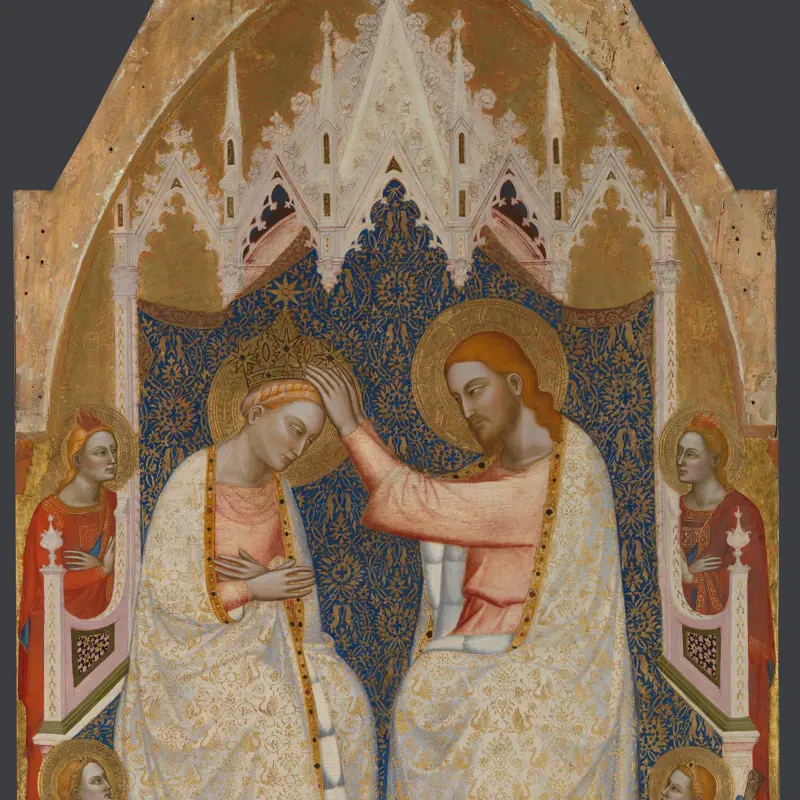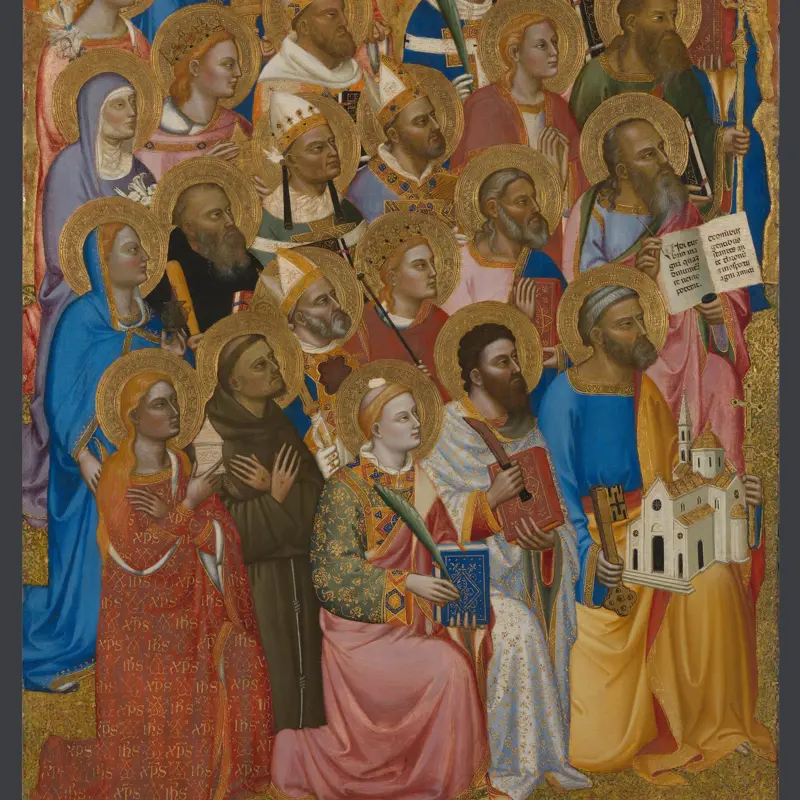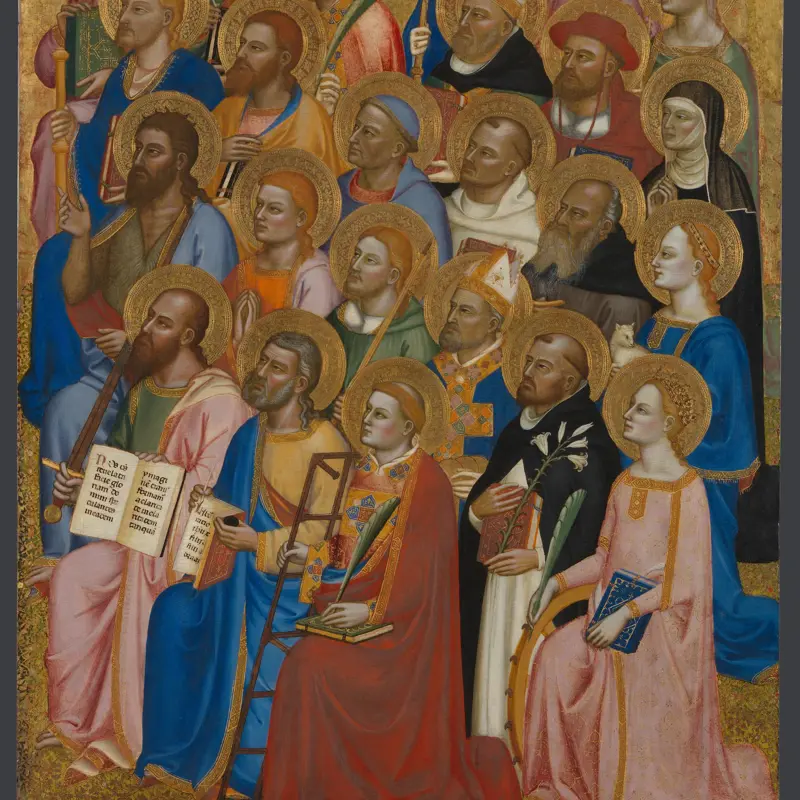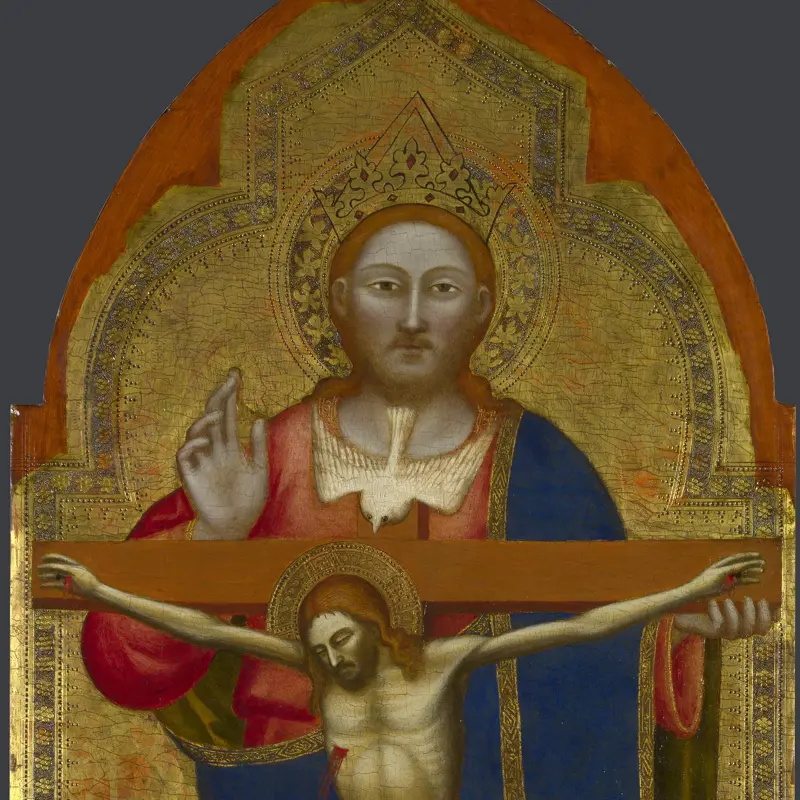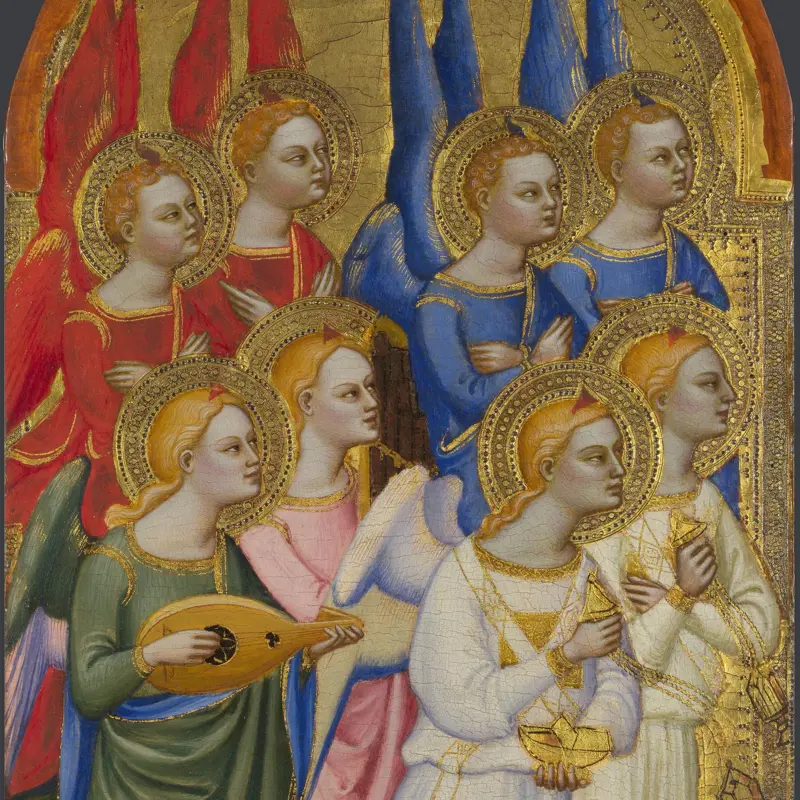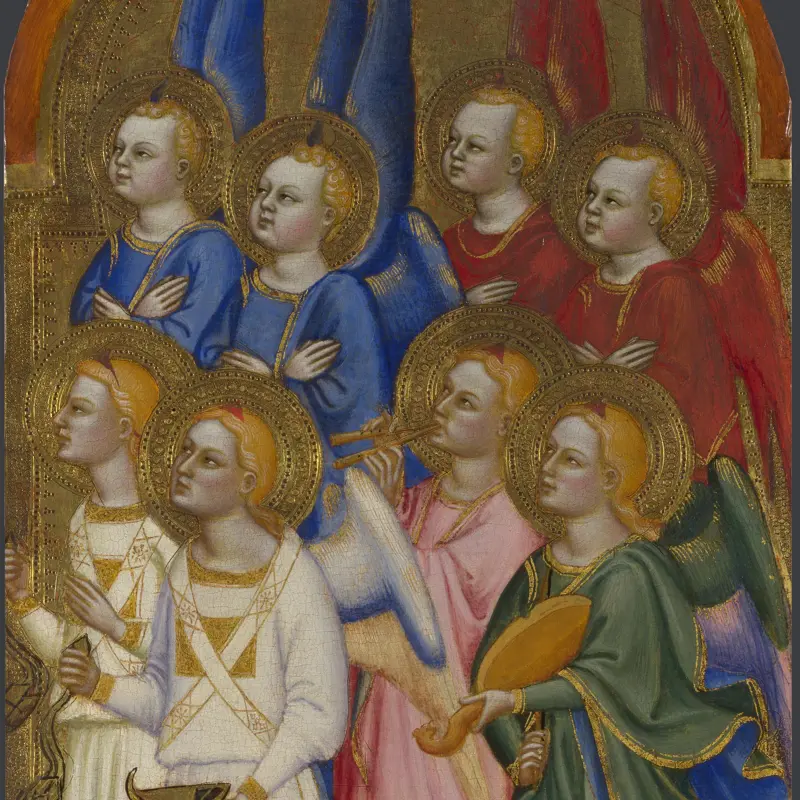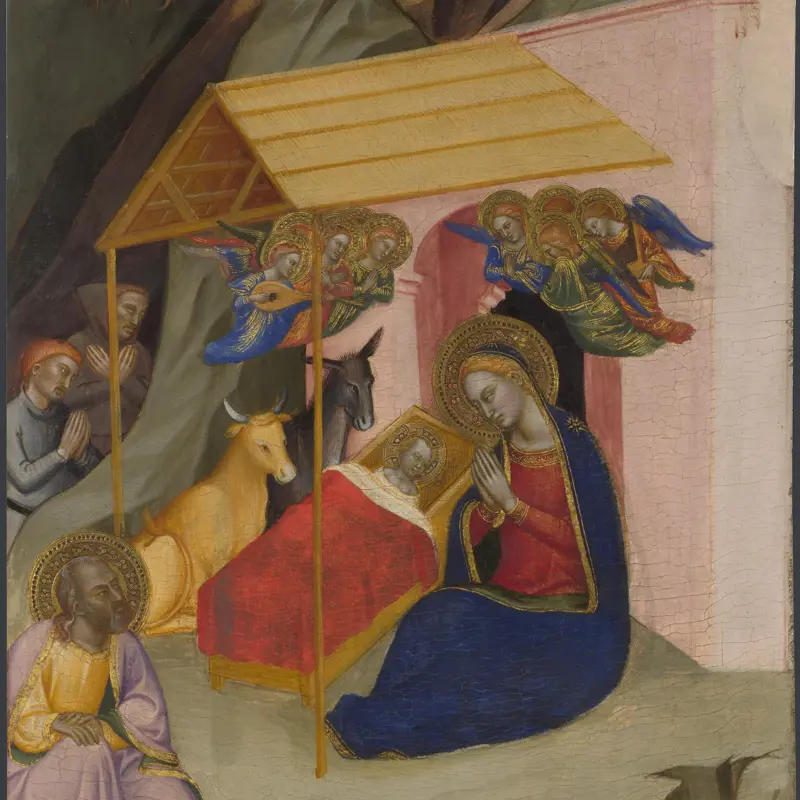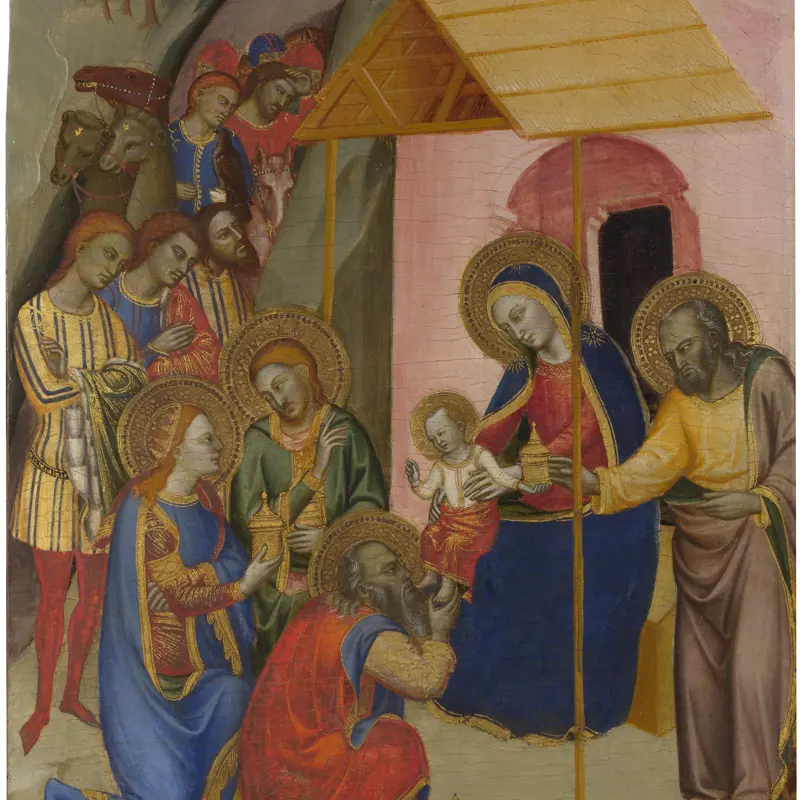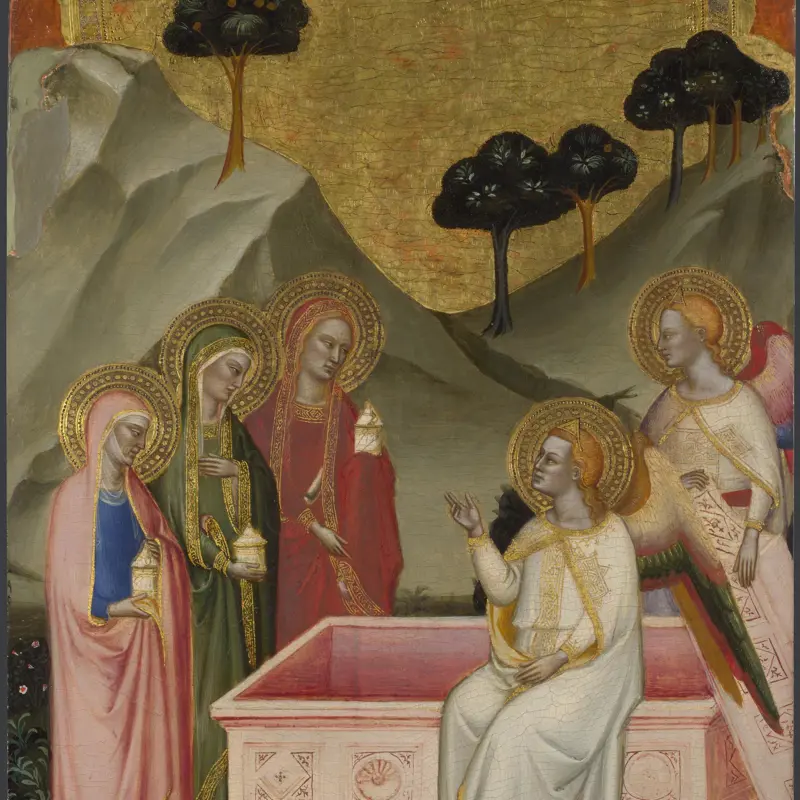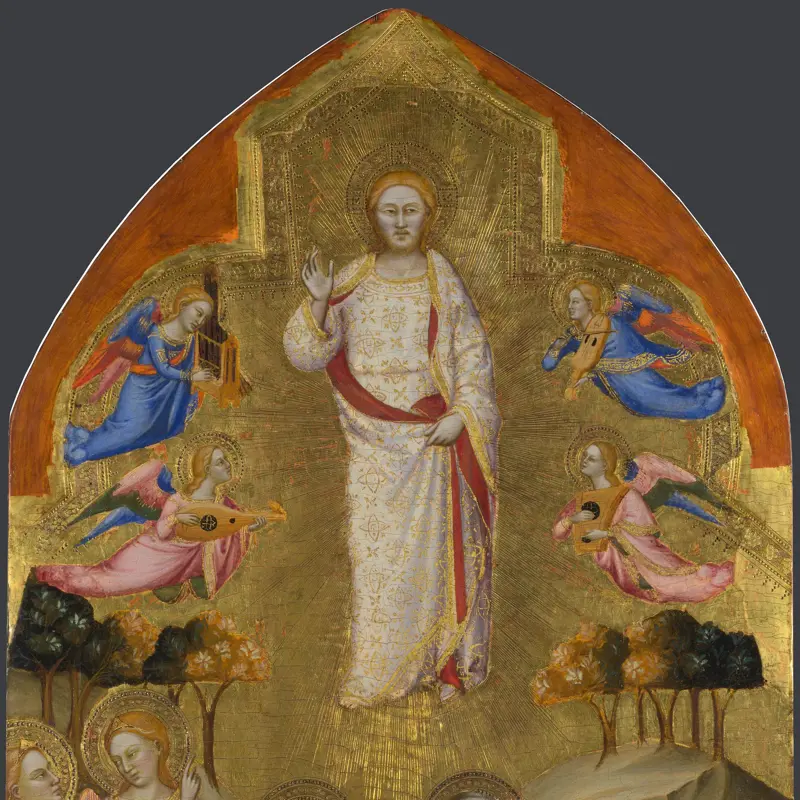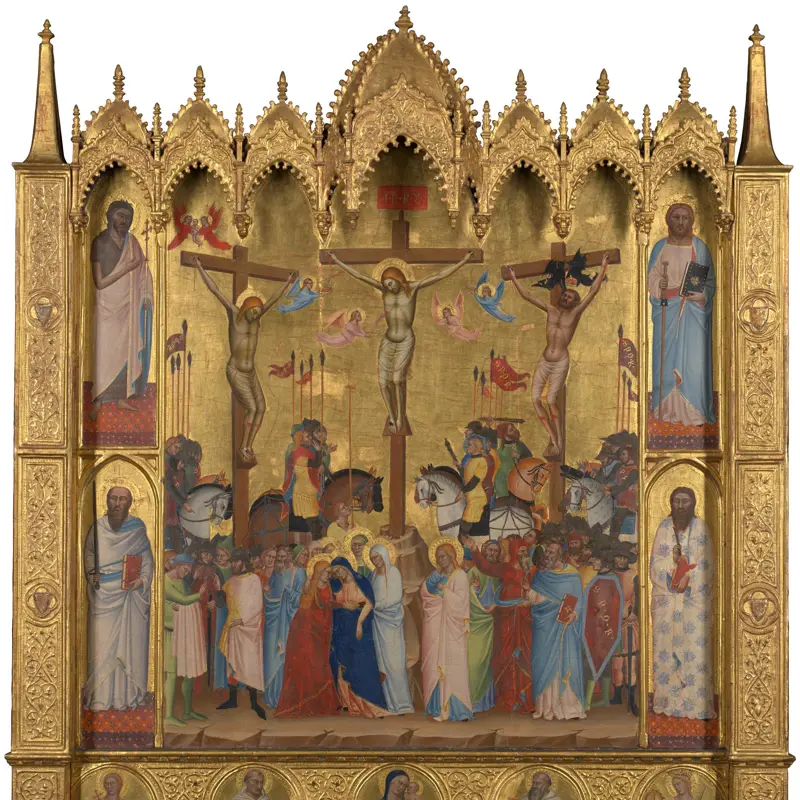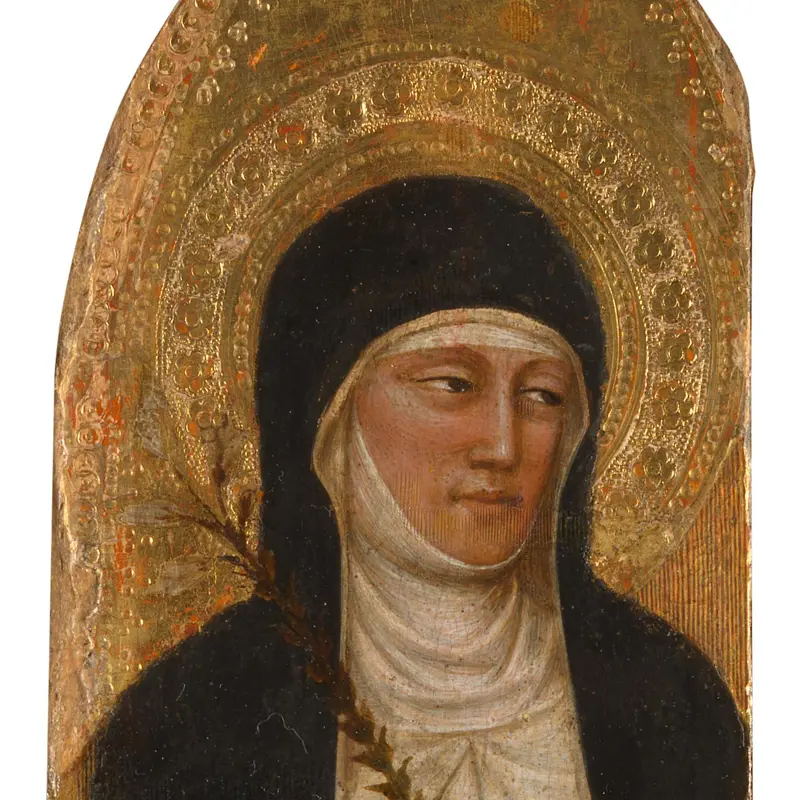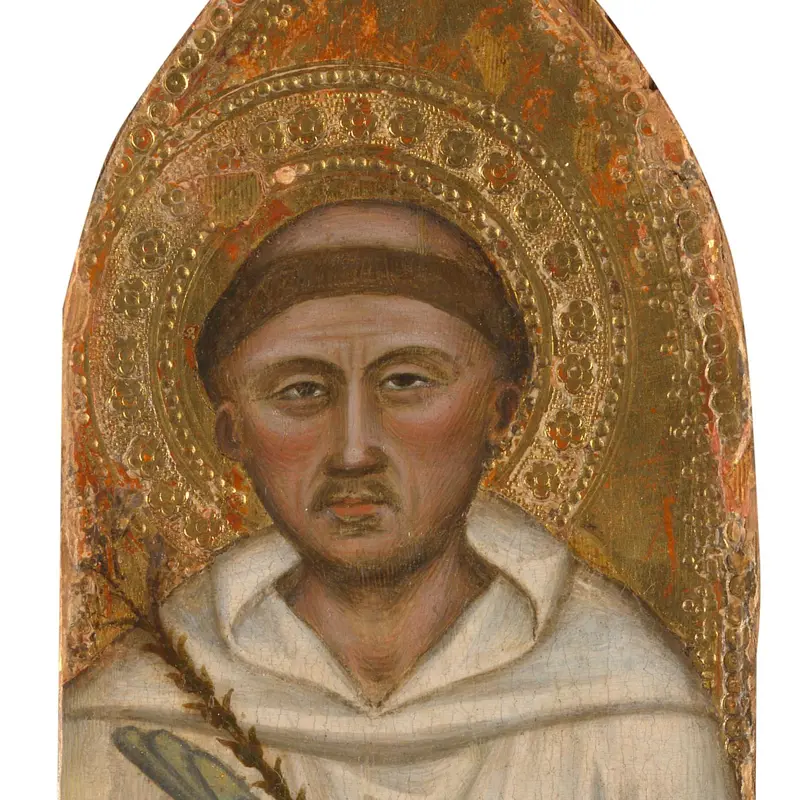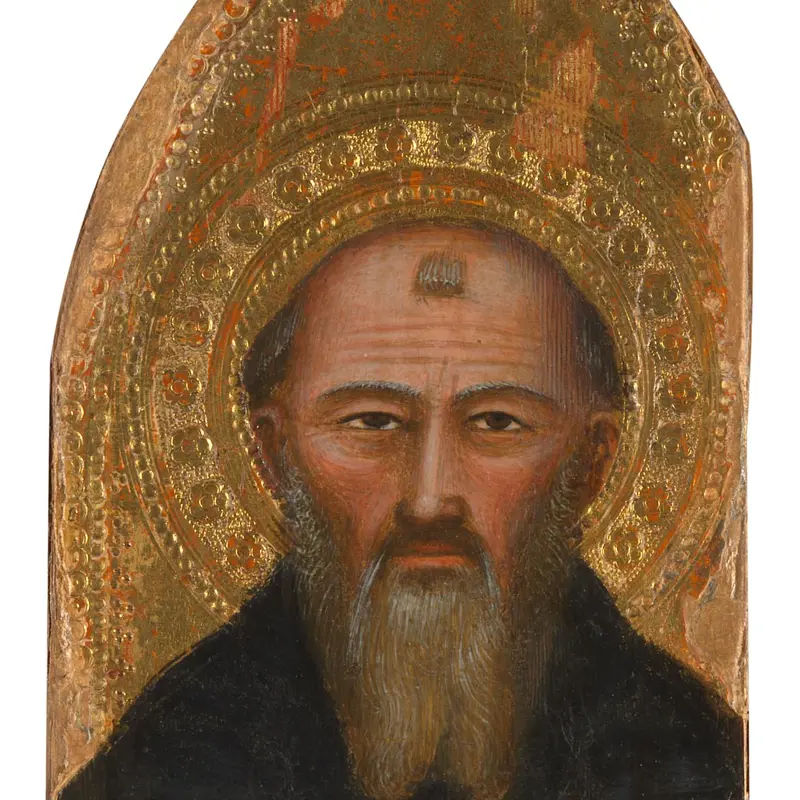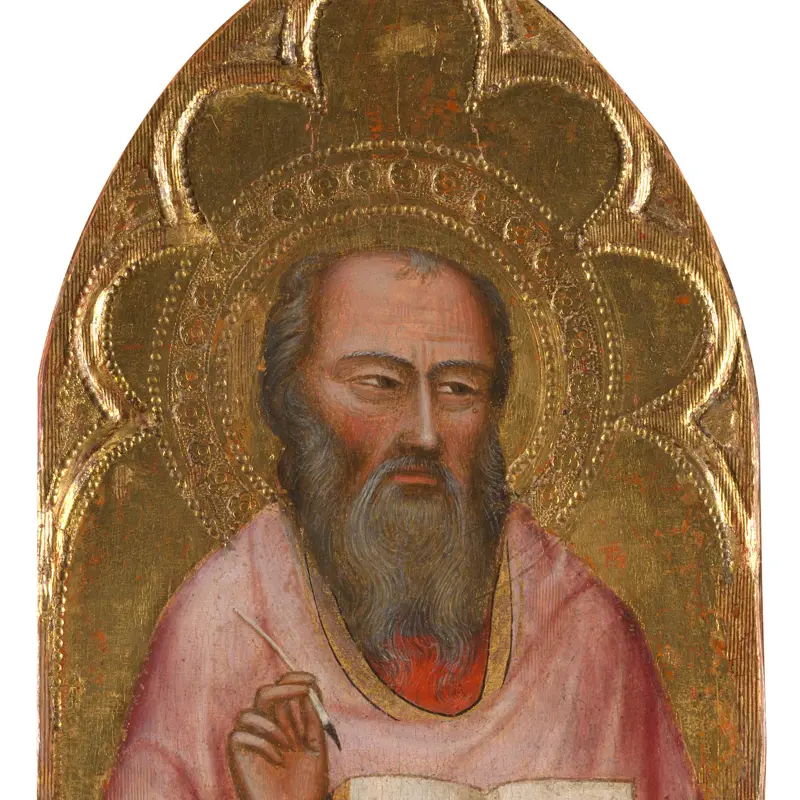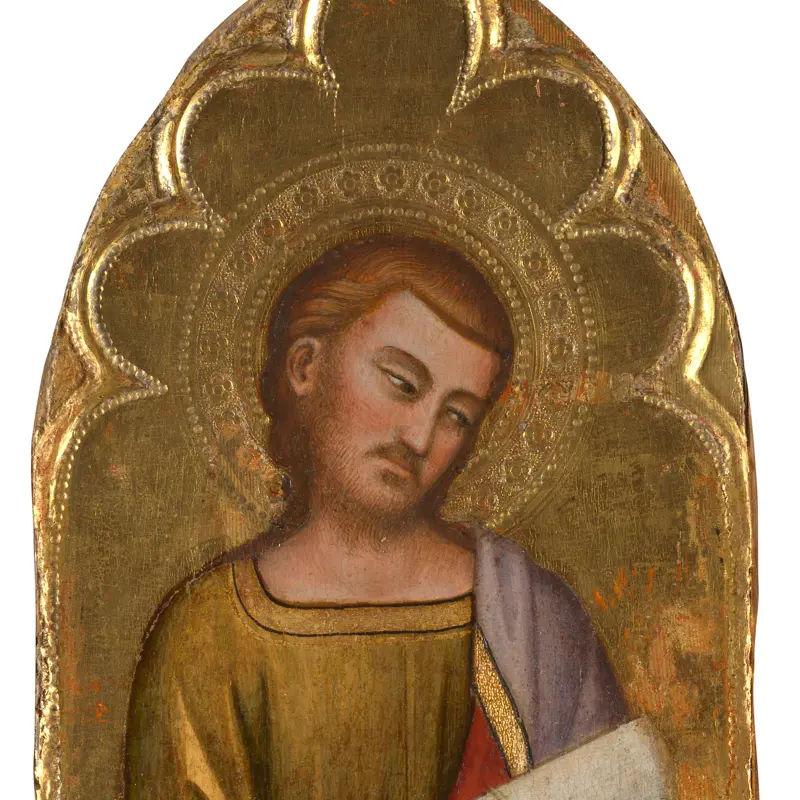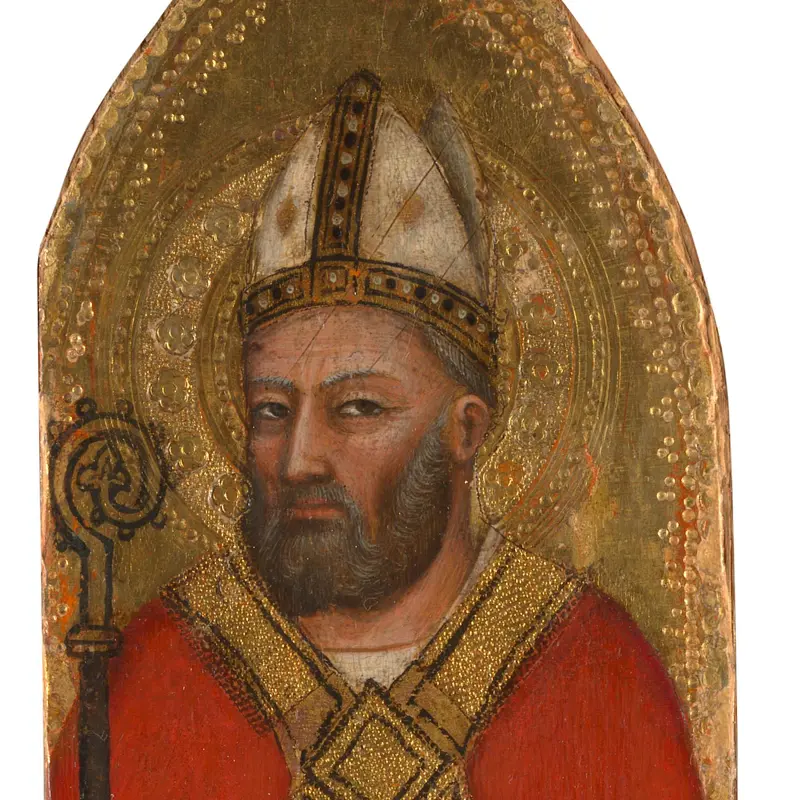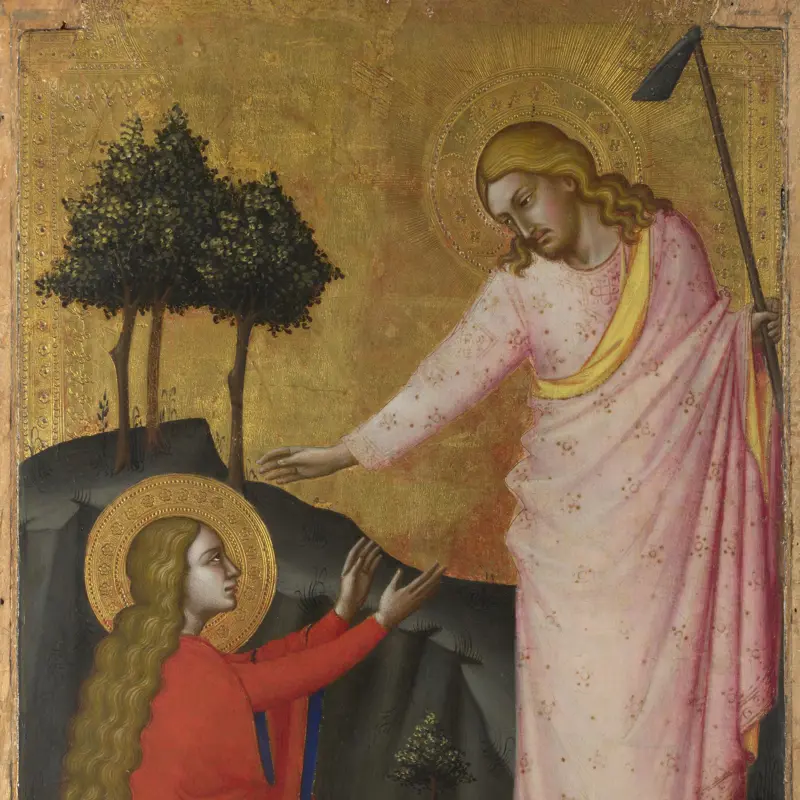Jacopo di Cione and workshop, 'The Three Marys at the Sepulchre: Upper Tier Panel', 1370-1
About the work
Overview
This panel comes from an altarpiece made for the church of San Pier Maggiore in Florence, and belongs to a sequence of narrative scenes showing events from Christ’s birth, the Resurrection and his ascension to heaven. They appeared above the three panels of the main tier, which show the coronation of the Virgin surrounded by adoring saints.
This scene shows three of Jesus’s followers at his tomb. They carry jars with spices to anoint his body, according to the Jewish custom. The tomb, however, is open and visibly empty. Two angels, one sitting on the tomb, appear to the women. According to the biblical account in the Gospel of Luke they ask, ‘Why do you seek the living among the dead?’ and explain how Jesus has risen from his tomb, overcoming death.
Key facts
Details
- Full title
- The Three Marys at the Sepulchre: Upper Tier Panel
- Artist
- Jacopo di Cione and workshop
- Artist dates
- Documented 1365; died 1398 -1400
- Part of the series
- The San Pier Maggiore Altarpiece
- Date made
- 1370-1
- Medium and support
- Egg tempera on wood (probably poplar)
- Dimensions
- 95.6 × 49.1 cm
- Acquisition credit
- Bought, 1857
- Inventory number
- NG576
- Location
- Room 57
- Collection
- Main Collection
Provenance
Additional information
Text extracted from the ‘Provenance’ section of the catalogue entry in Dillian Gordon, ‘National Gallery Catalogues: The Italian Paintings before 1400’, London 2011; for further information, see the full catalogue entry.
Exhibition history
-
2015Visions of Paradise: Botticini's Palmieri AltarpieceThe National Gallery (London)4 November 2015 - 14 February 2016
Bibliography
-
1951Davies, Martin, National Gallery Catalogues: The Earlier Italian Schools, London 1951
-
1986Davies, Martin, National Gallery Catalogues: The Earlier Italian Schools, revised edn, London 1986
-
1988Gordon, Dillian, National Gallery Catalogues: The Early Italian Schools before 1400, revised edn, London 1988
-
2001
C. Baker and T. Henry, The National Gallery: Complete Illustrated Catalogue, London 2001
-
2011Gordon, Dillian, National Gallery Catalogues: The Italian Paintings before 1400, London 2011
About this record
If you know more about this work or have spotted an error, please contact us. Please note that exhibition histories are listed from 2009 onwards. Bibliographies may not be complete; more comprehensive information is available in the National Gallery Library.
Images
About the series: The San Pier Maggiore Altarpiece
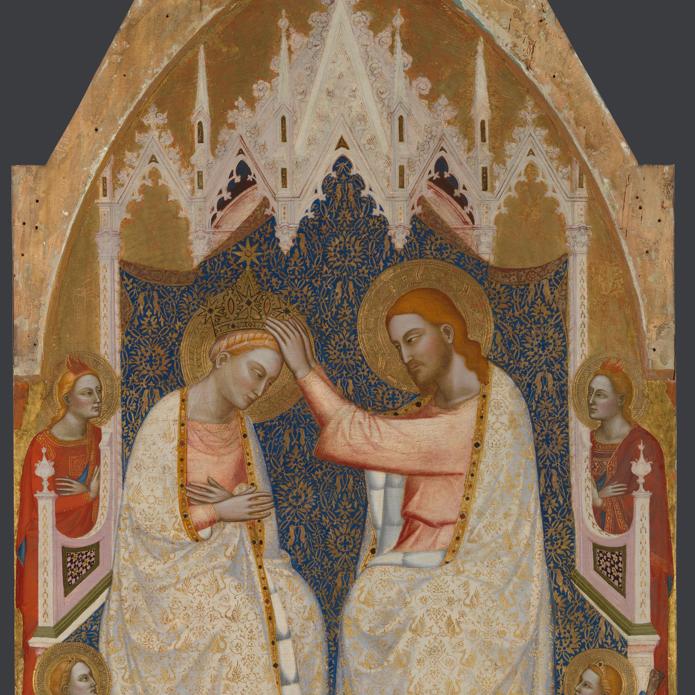
Overview
These images come from a large, four-tiered altarpiece created for the high altar of the choir of the church of San Pier Maggiore in Florence. It was made up of a number of separate panels, most of which are now in the National Gallery’s collection.
Although only the facade of the church remains today, it was one of the oldest and most important religious institutions in Florence when this altarpiece was made. It was founded by the first bishop of Florence, Saint Zenobius, in the fifth century. The picture formed the backdrop to one of the ceremonies relating to the ordination of each bishop of Florence until the late sixteenth century.
The altarpiece was most probably commissioned by the wealthy Florentine Albizzi family and many of its saints relate to their family or their trade as wool merchants. The central images showed the coronation of the Virgin by Christ surrounded by adoring saints – a highly popular image in Florence.

